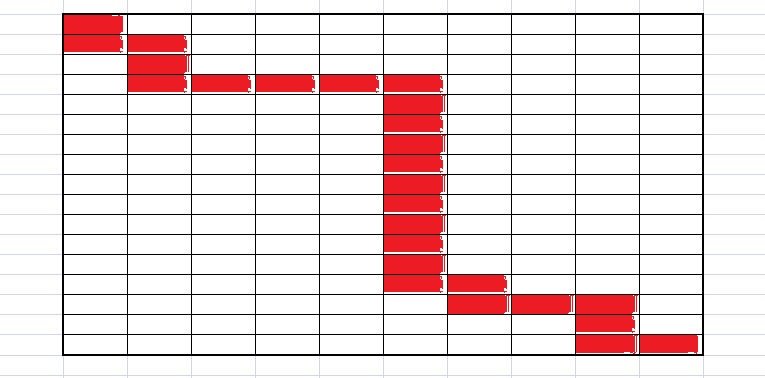
GRE Prep Club Daily Prep
Thank you for using the timer - this advanced tool can estimate your performance and suggest more practice questions. We have subscribed you to Daily Prep Questions via email.
Customized
for You
Track
Your Progress
Practice
Pays
Not interested in getting valuable practice questions and articles delivered to your email? No problem, unsubscribe here.
A rectangular floor that is 10 feet wide
[#permalink]
 08 Jun 2019, 04:15
08 Jun 2019, 04:15
2
1
1
Bookmarks
Question Stats:
 18% (00:58) correct
18% (00:58) correct
 81% (01:52) wrong
81% (01:52) wrong  based on 16 sessions
based on 16 sessions
Hide Show timer Statistics
A rectangular floor that is 10 feet wide and 17 feet long is tiled with 170 one-foot square tiles. A bug walks from one corner to the opposite corner in a straight line. Including the first and the last tile, how many tiles does the bug visit?
A. 17
B. 25
C. 26
D. 27
E. 28
A. 17
B. 25
C. 26
D. 27
E. 28
Re: A rectangular floor that is 10 feet wide
[#permalink]
 30 Apr 2020, 12:57
30 Apr 2020, 12:57
Expert Reply
The easiest way to solve this problem is to visualize this problem.

Therefore, the minimum tiles that the bug visits while moving from one corner of the rectangular floor is 26(Option C)
Therefore, the minimum tiles that the bug visits while moving from one corner of the rectangular floor is 26(Option C)
Re: A rectangular floor that is 10 feet wide
[#permalink]
 21 Nov 2024, 08:20
21 Nov 2024, 08:20
Expert Reply
The number of square tiles visited will be 17 + 9 = 26

The logic is this: From A to C, the ant will cover 17 tiles.
But from A to D, the ant will cover 17 + 2 = 19 tiles. Since there are three rows, every time the ant crosses from one row to another row, it crosses two tiles (shown by the coloured tiles). So for every extra row, it covers one extra tile.
Since we have to cover 10 rows, the number of tiles crossed will be 17 + 9 = 26
The logic is this: From A to C, the ant will cover 17 tiles.
But from A to D, the ant will cover 17 + 2 = 19 tiles. Since there are three rows, every time the ant crosses from one row to another row, it crosses two tiles (shown by the coloured tiles). So for every extra row, it covers one extra tile.
Since we have to cover 10 rows, the number of tiles crossed will be 17 + 9 = 26





